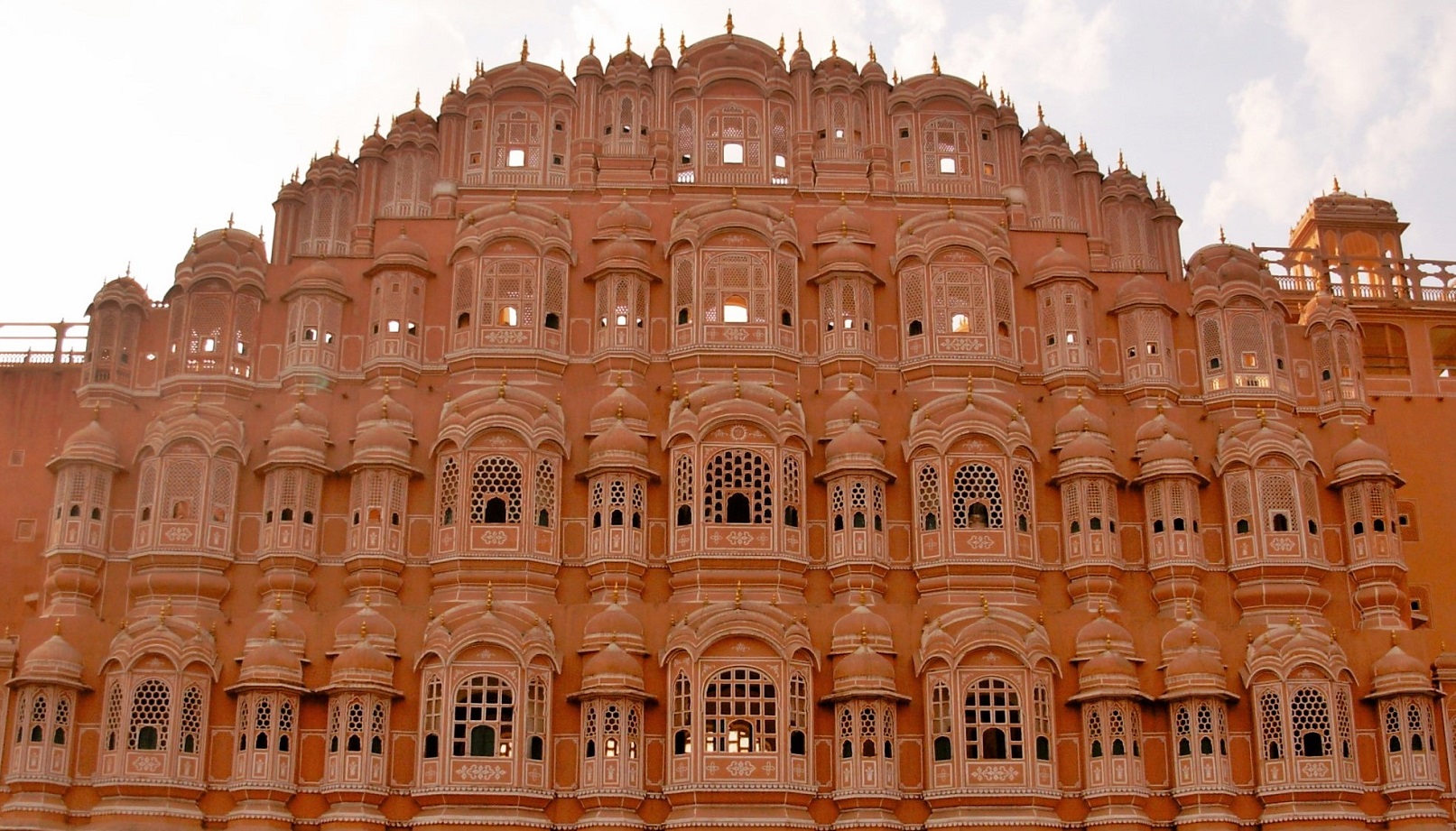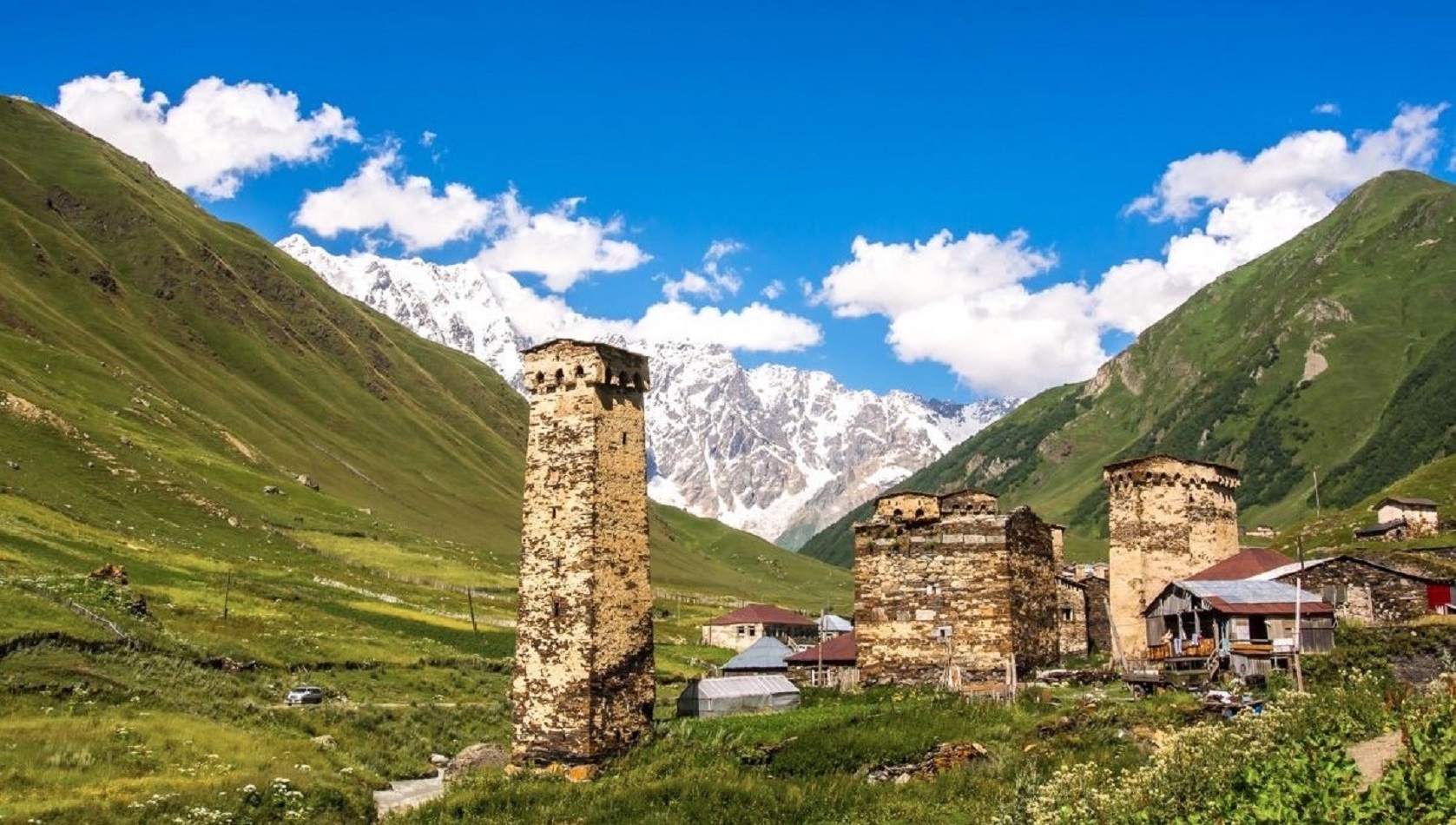The mysteries of ancient silk route holds a special place in my heart. While traveling to Samarkand and Bukhara in Uzbekistan, i read extensively about the presence of silk route in many other countries. One such tributery passed through towns of Mandawa, Churu, Ramgarh and Nawalgarh; the region collectively known as Shekhawati.

History of Shekhawati
Located on the route of camel caravans, Shekhawati- a quaint region in North West of Rajasthan was a bustling trade zone in early 18th century. The small traders carried out business with the Central Asia and the West saw their fortunes grow with the growth of trade of cotton, spices, grains and silk. The wealthy merchants built gigantic mansions, known as Havelis in their hometowns. The local traders who ventured to far off lands for business brought back fanciful lavish lifestyle from the west. After returning from their journeys, they commissioned local artisans to decorate the havelis with Belgian mirrors, Burmese teak wood, Murano glasses and other ostentatious extravaganza. The havelis consisting of hundreds of rooms, courtyards and windows were richly decorated with exquisite frescos illustrating not only local cultural and religious customs but also rendering fancy elements from the west. With the beginning of 20th century, the trade shifted; with the merchants moving their businesses to port cities of Mumbai and Kolkata. Eventually their families shifted as well, leaving behind large empty havelis in the hands of caretakers. Today most of these mansions are unattended, in ruins, entangled in litigation between multiple ownerships and family feuds.

Road trip to Shekhawati
I jumped at a chance of taking ‘The Road Trip to Abandoned India’ when Chandni, the effervescent founder of Transforming Travels informed me of the upcoming long weekend trip to Shekhawati.
As a group of random travelers, when we embarked on the journey, we had the faintest idea what awaited us. As we sat off on the road to Jhunjhunu on 26th January, we were basically looking forward to a short break from the routine and take advantage of the first long weekend of the year. I was happy to be starting the year with a trip to an abandoned corner of India which enjoyed prosperity throughout the 19th century.

It was an unusual foggy morning and we tried to keep ourselves warm in vain. The yellow mustard fields shining through the grey gloom brought cheer on my face on that cold morning. It was evident that Rajasthan has invested in good irrigation system.The fog accompanied us halfway through; though it slowed us down, i prefered fog over Delhi smog. The idea of stopping for chai was received with some enthusiasm. The coach full of sleepy souls came alive with hot kullad chai at a roadside ‘Chote Munim Hotel’. After an initial round of introductions it was evident that it wasn’t a random group of people but a bunch of inspired travelers.
Arrival in Mandawa
Bright sunshine and chaos welcomed us in Mandawa, the main town of Shekhawati. After a quick outdoor lunch of Gatta curry and Toor dal, we were guided to the old quarter by our enthusiastic local guide Raja. Walking was the best way to explore narrow lanes of Mandawa. It was impossible to ignore worn out havelis and abandoned mansions at every nook and corner. We beamed at the first glance of vivid frescos as we peeped through the large door of Jhunjhunwala Haveli. The caretakers seemed used to casual tourists interferences. A brief walk brought us to the Snehi Ram Ladia Haveli, whose irresistible green windows and doors lured us inside for a detailed tour. After exploring the courtyards and rooms we climbed on top of the terrace from where i could see entire Mandawa. Everything seem to be engulfed by the warm glow of evening sun.

Over the evening entertainment, travel talks continued. We opened up to each other; there was already a sense of bonding between all of us. And this was just the beginning.
Visiting Ramgarh
During next two days we saw more of havelis, chatris, ornate doors, frescos, hundreds of windows, arches, galleries and courtyards; each one competing for its rightful space in our minds and hearts.

Next morning we sat off for Ramgarh after breakfast. Leisure stroll on the streets of Ramgarh was like a time travel into 19th century. The main street was lined with abandoned havelis with ornate windows and jharokhas.

Our first stop over was at a grand structure of Podar Chatris. Constructed in a palatial style in 1940s, Podar Chatris were built to commemorate the dead family members of the merchant. The chatris also served as a sarai for travelers and a temporary shelter for homeless.
Trigger-happy me rushed from one corner to the other trying to capture the play of arches, windows and passages. The hidden family shiva shrine, still intact with original frescos left me awestruck.
None of us really wanted to leave the chatris but we had a special visit planned to the school for differently abled children. It was heartening to see the little ones with varying degrees of disabilities being looked after with tender care and given equal attention. We witnessed a small dance choreographed by some of them. What i loved the most about Transforming Travels was their efforts to go beyond the usual sightseeing and leave a positive impact on the place by supporting the local community.

Churu – The land of havelis
With warmth in our hearts we moved on to Churu, a big brother of Mandawa with more havelis waiting to cast their spell on us. A heritage walk with Lalji, our local guide from Churu, filled us with finer nuances of havelis and lavish lifestyles of its wealthy owners. Lalji who hails from an elite family himself was full of charisma and could command access to privately owned and still inhibited havelis in Churu which were otherwise beyond public reach. He oriented us with different wall painting techniques and architecture styles employed as haveli owners tried to outdo each other. I couldn’t stop marveling at the progressive influences of Renaissance, Stucco and Art Deco on havelis built in late 40s. Over a cup of hot tea at Vijay Tea House, Lalji informed us of no new haveli being constructed post 1960s.


Visiting local artisans
The heritage walk ended with a tuk tuk ride to local artisans in the area. It was fascinating to witness a National award winner sandalwood miniature artist crafting masterpieces right in front of our eyes! The lacquer bangle maker stole hearts of every woman in the group who lined up outside his little shop to craft bangles of their choice of colors and styles.This is the promise upon which Transforming Travels has been founded. It promises to take you as close and personal to the destinations as possible!
We continued our discussion about local traditions and customs over a dinner on the terrace. For me it was fun to spend this holiday with total strangers who became my friends and confidante in such a short time.
More havelis in Nawalgarh
There was more action awaiting on the last day. We visited Nawalgarh, another town which enjoyed prosperity during the hay days of trade in the 19th century. Visiting the well-restored Podar Haveli transported me into the glorious days of Shekhawati. Constructed in 1902 by Anandilal Podar, the haveli was a residential quarter of the Podar family before being restored as a museum.

The painstaking task ensured reviving 750 frescos spreading across 11,000 square meters. The beautiful rendition of Krishna Leela at the entrance left me speechless where Radha is seen soaking up the dark color of Krishna, depicting their ultimate union. Besides the usual themes of Rasleela, Ramayana, Shiva, Ganesha, Podar Haveli is adorned with frescos of a train arriving and departing at a station. The guide pointed out that the locals in Nawalgarh were quite astonished to see a real train in 1912 as depicted in frescoes on the outer courtyard of Podar Haveli.
The well conserved Morarka Haveli just few meters away is another gem of Nawalgarh. Unlike the Podar Haveli, Murarka has been left with its original faded charm. After a visit, I sat in silence in the outer courtyard soaking in the magnificence while reminiscing over the lost opulence of Shekhawati. Each worn out fresco, window and empty courtyard seemed to reveal its own story of grandeur gone by.

Transforming Travels
It was finally a time to bid farewell to Shekhawati and its unique heritage. The trip was more than just sightseeing, it was a window into the glorious past of this remote region. It was an experiential travel; visiting artisans from the region and spending an afternoon at a school for differently abled children enriched our experience. It was a long weekend well spent with Transforming Travels exploring havelis, chattris, courtyards in the bylanes of Mandawa, Ramgarh, Nawalgarh and Churu!

Being a solo traveler for last few years, and thoroughly enjoying it, i was sceptical about traveling with a group. But what conspired in those 3 days was remarkable. A bunch of inspired travelers returned to Delhi as one big happy family and i completely give it to Chandni’s single handed efforts in weaving a single thread amongst us. Taking temperaments of everyone in stride, she exerted to ensure we all have comfortable stay and good time soaking in the spirit of Shekhawati.
Read more about Havelis of Shekhawati – A large open art gallery!


